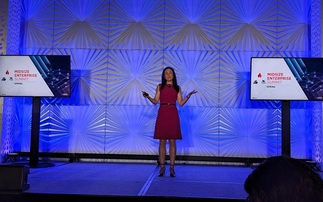As many countries and organisations exit lockdown, it's clear that the remote working culture of the 2020 workforce is likely to be with us for the long term. Several surveys have suggested that remote working levels will remain far higher than before, even when the crisis is finally over.
The reasons are not hard to fathom: the future is unpredictable; many organisations have found that they can operate without the majority of staff being based at the office; and the fallout of the pandemic is becoming clear, with soaring property costs and people keen to stay away from crowded urban centres.
For IT leaders, keeping the organisation's infrastructure running in an environment of mass home working has been a challenge - on the whole, one foisted on them by necessity, even if more flexible workflows had been a strategic priority.
As such, the crisis has been a proof of concept for a more dispersed and remote workforce: it worked, because it has had to work.
Endpoint management
However, managing and securing all of the organisation's endpoints - whatever they are and wherever they happen to be - is a tall order without the right tools.
It's not just a matter of a robust security policy and supportive technologies, or an informed workforce taking common-sense precautions at home; it is also about keeping corporate devices up to date and performant. Yet this element of the task remains under-appreciated.
Anecdotal evidence from different economic sectors suggests that while ageing corporate laptops running an outdated OS might have been acceptable when employees had a desk at head office, they don't translate well to a world of remote working, where users need access to the latest collaboration and conferencing tools within their Office suites and any OS-level vulnerabilities are patched.
This may force many to adopt unsanctioned apps and channels in the cloud, which could increase the security risk to the organisation.
The management challenge
Computing sought to gain insights into how well IT leaders are coping with the challenges of managing the IT estate. We spoke to 150 IT leaders in medium to large organisations across all sectors of the economy, 100 percent of whom are actively involved in using, procuring, testing, and evaluating the IT estate.
Amongst the key findings, 73 percent of IT leaders believe keeping devices secure will become a bigger challenge in the years ahead, while 79 percent believe remote working will cause significant IT management challenges on an ongoing basis.
Keeping devices secure was cited as a challenge by nearly three-quarters (73 percent) of respondents, keeping them updated by 57 percent, and keeping devices performant by nearly half of the survey base (48 percent).
Asked to measure on a scale of 1 to 10 how much they expect remote working to cause increased management challenges over the next 12 months - with ‘1' being ‘no change' and ‘10' being ‘to a very significant extent' - 79 percent of IT leaders' responses fell in the 7-10 range, with 35 percent choosing ‘9' or ‘10'.
Internal tensions
This suggests that the demands on IT teams to keep devices up-to-date, secure, and able to do their jobs are greater than ever. That's not ideal in a crisis. As OS updates stack up, testing time increases, and the cost of security breaches multiplies, IT workloads grow - taking in regulatory compliance too.
Costs are certainly a big part of the challenge. According to Computing, 60 percent of IT leaders report their device management costs increasing, while 21 percent report them falling. For everyone else, nothing has changed: a mixed picture, but with a clear trend towards rising cost.
Despite this, when asked to rate the efficiency of their current IT PC/client estate management processes on a scale from ‘1' (very low) to ‘10' (very high), over two-thirds opted for 7-10. And yet costs are rising for a majority.
From these responses, the need for better remote management of the IT estate in the cloud could not be clearer. Security compliance is the dominant reason for adoption, cited by over half of respondents, with the need for more nimble and efficient device management processes following close behind (49 percent).
But internal issues are on IT leaders' minds too: the number three motivation is using dedicated tools to reduce the IT team's workload. This was chosen above the need to facilitate remote working itself.
Either way, 84 percent of respondents agree that organisations need to look beyond perimeter-based security.
The consequences of absent or ineffective remote device management represent a financial risk, said over three-quarters of IT leaders (77 percent), while 87 percent believe they pose a cybersecurity risk.
Don't count the costs of poor management. Invest in better tools to avoid these problems occurring in the first place.
Investigate a multi-layered approach to security, starting with hardware, the use of intelligent end points with embedded AI, and robust cloud-based remote management.
Find out more about the future of remote device management challenges and solutions from our bespoke research.

















